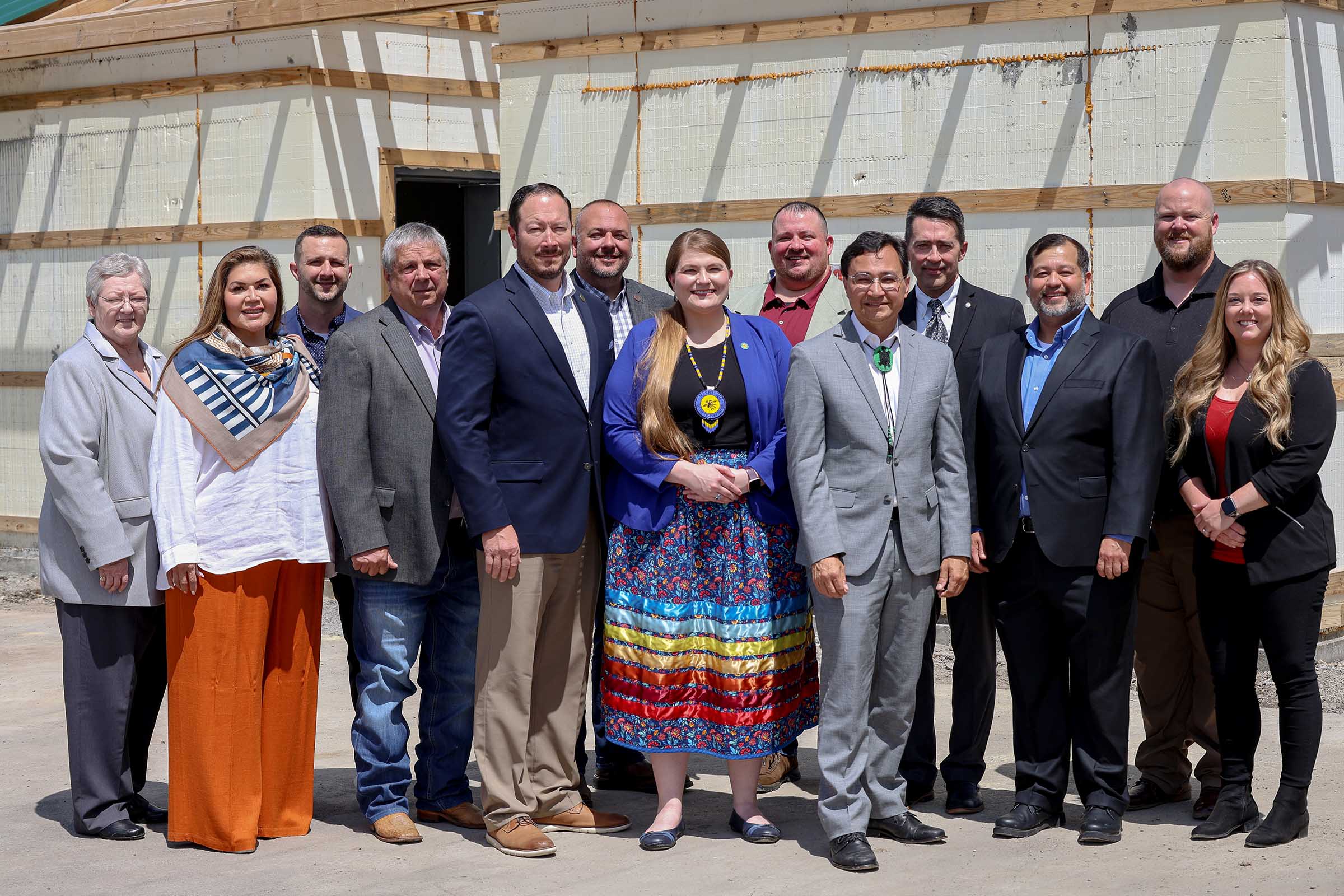
- Details
- By Chuck Hoskin Jr
Guest Opinion. Severe weather – including tornadoes, flooding and violent thunderstorms – is an inevitable reality on the Cherokee Nation Reservation. Storms can wreak havoc on Cherokee communities, even endangering lives. The risk is greatest for those families that struggle to afford a safe place to ride out storms. All Cherokees should have peace of mind that they can be safe from severe weather.
That is why I am proud to announce a new program to construct about 300 storm shelters across the Cherokee Nation Reservation. We want to make sure all Cherokees can protect themselves and their loved ones from dangerous weather. Deputy Chief Bryan Warner and I know we have a duty to protect Cherokee people — especially our elders, citizens with disabilities and military veterans. This program takes direct action to do just that.
The $2.4 million initiative, funded by the tribe's American Rescue Plan Act dollars, will provide lifesaving above-ground storm shelters. Applications are currently being accepted, and our diligent team at the Housing Authority of the Cherokee Nation is working to verify applications and conduct site inspections. All 300 shelters will be delivered and constructed over the next year.
We also recently hosted leaders from the Federal Emergency Management Agency to visit and tour a community storm shelter under construction in Hulbert, a community where nine tornados have touched down since 2015. Construction of the 256-person capacity shelter, which can withstand winds greater than 200 mph, should be completed by July. It will be open to the entire community during storms, and it is located by a tribal community center and efficiency homes for Cherokee elders.
The Hulbert site is one of seven community shelters the tribe is constructing, using both tribal dollars and FEMA grant funds. This collaboration between FEMA and Cherokee Nation further protects our rural families.
Shelters have been completed at the Cherokee Nation Emergency Medical Services building in Tahlequah, along with the communities of Tailholt, Greasy and Chewey. Future sites include the Tsa-La-Gi apartments in Sallisaw and the Durbin Feeling Language Center in Tahlequah.
These initial ARPA-funded sites are only the beginning. Deputy Chief Warner and I will announce plans for future community storm shelter and other types of safe room space in the near future.

For those who do not have their own safe room or storm shelter, a designated place within the community for protection during storms is essential. We urge all Cherokees to be mindful of weather forecasts, so they can get to a secure place in time. These new buildings will be invaluable assets for local communities, and they showcase another successful tribal-federal partnership.
A core value at the Cherokee Nation is believing in the power of community and taking care of one another. These new investments speak to that value. Together, we are building long-term infrastructure that will help protect our Cherokees in times of crisis.
Chuck Hoskin, Jr. is the principal chief of the Cherokee Nation.
More Stories Like This
The Absence of October's Job Report Shows Why Native American Communities Need Better DataTribal IDs Are Federally Recognized. ICE Agents Are Ignoring Them.
Thanksgiving: Part of "Broken Circle Holiday"
Thanksgiving is a Tradition. It's Also a Lie
Decisions About Us, Without Us: Education Dismantling Ignores Tribal Nations
Help us tell the stories that could save Native languages and food traditions
At a critical moment for Indian Country, Native News Online is embarking on our most ambitious reporting project yet: "Cultivating Culture," a three-year investigation into two forces shaping Native community survival—food sovereignty and language revitalization.
The devastating impact of COVID-19 accelerated the loss of Native elders and with them, irreplaceable cultural knowledge. Yet across tribal communities, innovative leaders are fighting back, reclaiming traditional food systems and breathing new life into Native languages. These aren't just cultural preservation efforts—they're powerful pathways to community health, healing, and resilience.
Our dedicated reporting team will spend three years documenting these stories through on-the-ground reporting in 18 tribal communities, producing over 200 in-depth stories, 18 podcast episodes, and multimedia content that amplifies Indigenous voices. We'll show policymakers, funders, and allies how cultural restoration directly impacts physical and mental wellness while celebrating successful models of sovereignty and self-determination.
This isn't corporate media parachuting into Indian Country for a quick story. This is sustained, relationship-based journalism by Native reporters who understand these communities. It's "Warrior Journalism"—fearless reporting that serves the 5.5 million readers who depend on us for news that mainstream media often ignores.
We need your help right now. While we've secured partial funding, we're still $450,000 short of our three-year budget. Our immediate goal is $25,000 this month to keep this critical work moving forward—funding reporter salaries, travel to remote communities, photography, and the deep reporting these stories deserve.
Every dollar directly supports Indigenous journalists telling Indigenous stories. Whether it's $5 or $50, your contribution ensures these vital narratives of resilience, innovation, and hope don't disappear into silence.
 The stakes couldn't be higher. Native languages are being lost at an alarming rate. Food insecurity plagues many tribal communities. But solutions are emerging, and these stories need to be told.
The stakes couldn't be higher. Native languages are being lost at an alarming rate. Food insecurity plagues many tribal communities. But solutions are emerging, and these stories need to be told.
Support independent Native journalism. Fund the stories that matter.
Levi Rickert (Potawatomi), Editor & Publisher
